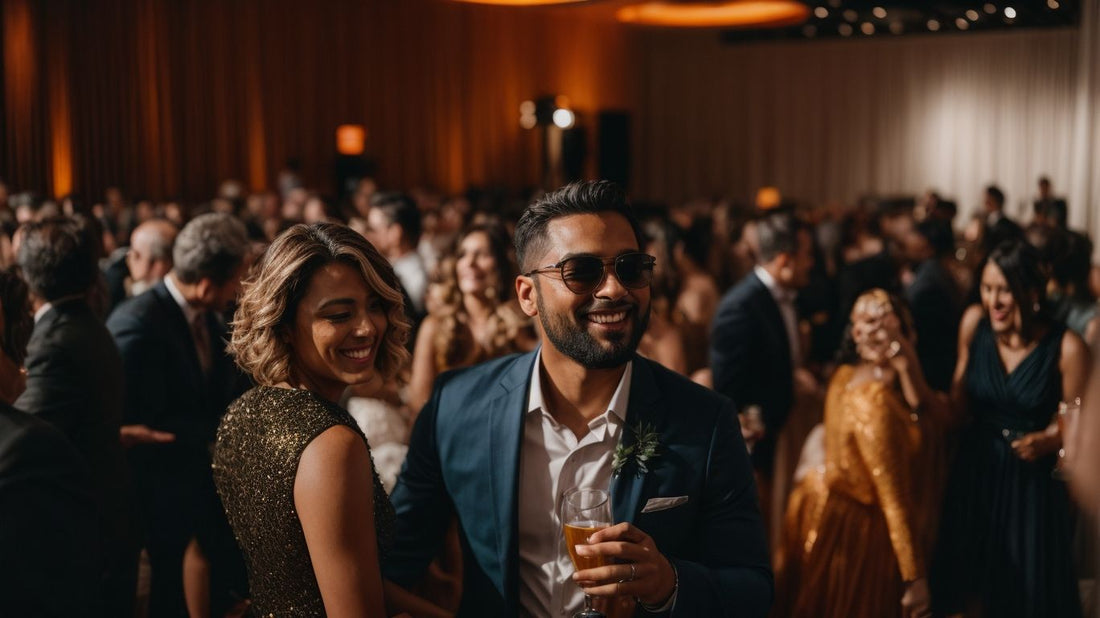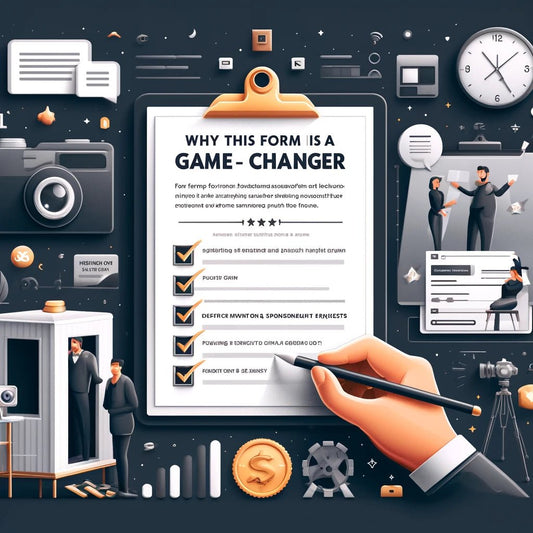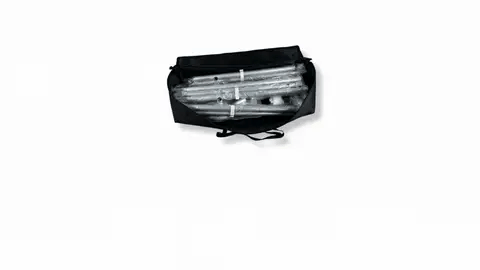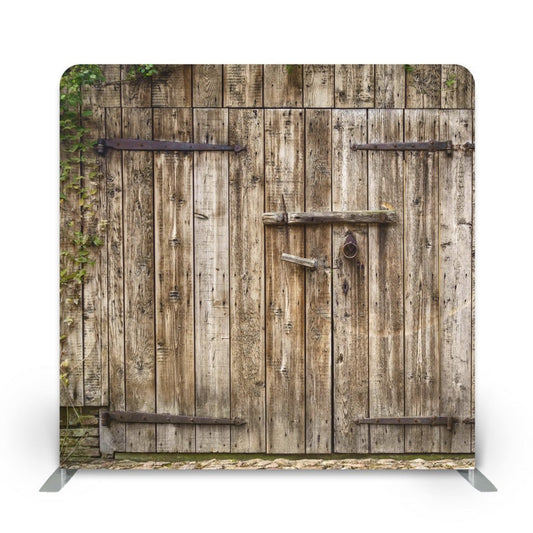
Capturing the Essence of Corporate Events: Professional Event Photography
Share
.jpg)
Corporate event photography plays a crucial role in capturing the essence and significance of corporate events. Whether it's a conference, seminar, product launch, or annual gala, documenting these occasions is essential for business growth and success. The importance of corporate event photography can be understood through various aspects such as building a professional image, capturing memorable moments, and effective marketing and promotion.
Having high-quality photographs from corporate events helps build a professional image for the company. These images can be used for marketing materials, company websites, social media platforms, and press releases, showcasing the organization's professionalism and commitment to excellence. capturing memorable moments from these events allows participants to relive their experiences and strengthens the connection between attendees and the organization.
Furthermore, corporate event photography serves as a powerful marketing and promotional tool. The images captured can be utilized in marketing campaigns, event recaps, newsletters, and future promotions, attracting potential clients, partners, and investors. They provide visual content that tells a story and highlights the organization's achievements, attracting interest and generating buzz.
To successfully capture corporate events, photographers should follow some essential tips. This includes understanding the event objectives, planning and preparation, capturing key moments and details, working with lighting and composition, and interacting with attendees and clients effectively.
For corporate event photography, having the right equipment and gear is crucial. This includes camera bodies and lenses suited for various shooting conditions, external flash and lighting equipment for achieving the desired lighting effects, tripods and stabilization tools for steady shots, and backup and storage solutions to ensure the safety and storage of the images.
Choosing the right corporate event photographer is equally important. Factors to consider include their experience and portfolio, professionalism and communication skills, understanding of corporate culture and etiquette, and budget and pricing considerations.
What is Corporate Event Photography?
Corporate event photography refers to the specialized field of photography that focuses on capturing images at corporate events. So, what exactly is corporate event photography? Well, it is the art of documenting and showcasing corporate gatherings, such as conferences, seminars, trade shows, and product launches. Skilled corporate event photographers excel at capturing candid moments, key presentations, and the overall ambiance of these events. Their ultimate objective is to provide high-quality images that can be used for promotional and marketing purposes, as well as for internal documentation and communication within the organization.
The Importance of Corporate Event Photography
Corporate event photography holds tremendous significance in establishing a professional image, capturing unforgettable moments, and boosting effective marketing and promotion strategies. It not only immortalizes corporate gatherings but also adds authenticity and credibility to a brand or organization. By expertly documenting the occasion with skillful precision, captivating visuals, and a keen eye for detail, corporate event photography helps create a lasting impression on clients, employees, and stakeholders.Building a Professional Image
Building a professional image through corporate event photography is essential for showcasing the professionalism and reputation of a company. To accomplish this, it is vital to consider the following strategies:
- Hire a skilled and experienced corporate event photographer who comprehends the intricacies of capturing a professional atmosphere.
- Emphasize capturing key moments and details that exemplify the professionalism and success of the event.
- Prioritize lighting and composition to ensure high-quality and visually appealing photographs.
- Engage and interact with attendees and clients, creating an atmosphere of comfort and engagement during the photography process.
- Ensure that the photographer possesses a clear understanding of corporate culture and etiquette to maintain a professional image.
By adhering to these steps, corporate event photography can effectively construct and enhance the professional image of a company.
Capturing Memorable Moments
Capturing memorable moments is one of the key aspects of corporate event photography. These moments not only serve as valuable keepsakes for attendees but also help in promoting the event and building a positive image for the organization. To effectively capture these moments, photographers should:
- Be attentive and observant, ready to capture spontaneous interactions and emotions.
- Focus on key moments such as keynote speeches, award ceremonies, and networking sessions.
- Pay attention to details like decorations, branding elements, and unique aspects of the event.
- Utilize different angles and perspectives to add variety and visual interest to the photos.
- Engage with attendees to create a comfortable environment and capture genuine expressions.
Effective Marketing and Promotion
Effective marketing and promotion are key benefits of corporate event photography. It allows companies to showcase their brand, engage with their audience, and create valuable content for their marketing campaigns. Here are some ways in which corporate event photography can contribute to effective marketing and promotion:
- Brand Visibility: High-quality event photos can be shared on social media, websites, and promotional materials, increasing brand visibility and attracting new customers.
- Content Creation: Event photos provide engaging content for blog posts, newsletters, and social media updates, keeping the brand relevant and driving customer engagement.
- Storytelling: Photos capture the essence of the event, showcasing the company's values, culture, and achievements, helping to tell a compelling story about the brand.
- Customer Connection: Sharing event photos allows attendees to relive the experience and connect with the brand on an emotional level, fostering loyalty and brand advocacy.
- Lead Generation: Event photos of satisfied clients and successful networking moments can be used as testimonials, generating leads and building trust with potential customers.
At a corporate conference, a company hired a professional event photographer to capture the event's key moments. The photos were later used in a targeted email marketing campaign, resulting in a significant increase in event registrations for the following year. The high-quality photos, showcasing the energy and excitement of the event, effectively convinced potential attendees of the value they would gain by participating.
Effective Marketing and Promotion can be achieved through corporate event photography. By hiring a professional event photographer, a company can showcase their brand, engage with their audience, and create valuable content for marketing campaigns. Utilizing high-quality event photos, companies can increase brand visibility, attract new customers, and drive customer engagement through social media, websites, and promotional materials. These photos not only provide engaging content for blogs, newsletters, and social media updates, but they also capture the essence of the event, allowing companies to tell a compelling story about their brand. Additionally, by sharing event photos, attendees can relive the experience and emotionally connect with the brand, fostering loyalty and brand advocacy. Furthermore, event photos featuring satisfied clients and successful networking moments can be used as testimonials, generating leads and building trust with potential customers. Therefore, incorporating corporate event photography as part of an effective marketing and promotion strategy can lead to significant results, as demonstrated by a company's targeted email marketing campaign that utilized high-quality event photos to increase event registrations for the following year.
Tips for Successful Corporate Event Photography
Looking to capture stunning shots at corporate events? Look no further! In this section, we've got you covered with essential tips and tricks for successful corporate event photography. From understanding event objectives to planning and preparation, capturing key moments and details, working with lighting and composition, and even interacting with attendees and clients - you'll find all the insider knowledge you need to ace your corporate event photography game. Get ready to elevate your skills and create memorable images!Understanding the Event Objectives
Understanding the event objectives of a corporate event is crucial for successful event photography. It helps the photographer capture the right moments and convey the intended message through their photos. To gain clarity on the purpose, theme, and goals of the event, it is important to communicate with event organizers. Researching the target audience and the industry will allow you to align your photography style and approach accordingly. Creating a shot list or storyboard will ensure that you capture the key moments and details that align with the event objectives. During the event, pay attention to the emotions and interactions happening in order to capture authentic moments that reflect the objectives. Additionally, adapting your photography techniques, such as composition and lighting, will enhance the visual storytelling that supports the event objectives. By understanding the event objectives, you will be able to deliver impactful photographs that effectively communicate the purpose of the event.
Planning and Preparation
- Thorough planning and meticulous preparation are paramount for a successful corporate event photography endeavor. Here are the essential steps to take into account:
- Prioritize understanding the event objectives: Take the time to familiarize yourself with the event's goals, theme, and desired outcomes.
- Conduct a venue scouting: Plan a visit to the location beforehand in order to assess the optimal angles, lighting conditions, and potential challenges.
- Develop a comprehensive shot list: Strategize and plan out the specific shots required to capture the event's essence, including crucial moments and key individuals.
- Ensure your equipment is ready: Prior to the event, make sure that all camera gear, batteries, memory cards, and accessories are clean, charged, and prepared for usage.
- Engage in effective communication with the event planner: Collaborate closely with the event organizer to align expectations, schedules, and important details.
- Punctuality is key: Aim to arrive early at the event location to set up your equipment, test the lighting, and effectively prepare for the start of the event.
- Establish rapport with attendees: Foster a comfortable environment and build a connection with the individuals present, enabling you to capture candid and natural moments.
- Be adaptable: Foresee unforeseen changes, adjust your plans accordingly, and always be ready to capture spontaneous and unexpected moments.
During a corporate gala, I diligently planned my shots and arrived early to set up. Just as the event began, an unexpected power outage occurred. Maintaining a calm demeanor, I swiftly adapted my camera settings, utilizing the available ambient light, and successfully captured stunning black and white images. Despite the setback, the resulting photographs proved to be extraordinary and unforgettable, much to the client's delight.
Capturing Key Moments and Details
Enclosing key moments and details is crucial in corporate event photography as it helps to preserve memories and showcase the essence of the event. The table below highlights the importance of capturing these key moments and details in corporate event photography:
| Importance of Capturing Key Moments and Details |
|---|
| 1. Highlights the atmosphere and energy of the event |
| 2. Captures important interactions between attendees |
| 3. Showcases the event's unique features and decor |
| 4. Provides content for marketing and promotional materials |
| 5. Preserves memories for future reference and reflection |
By focusing on capturing these key moments and details, corporate event photographers ensure that they deliver high-quality images that accurately represent the event and convey its significance to the audience.
Working with Lighting and Composition
To achieve successful corporate event photography, it is essential to work with lighting and composition. Here are some steps to consider:
- Assess the lighting conditions beforehand to determine if you need natural or artificial lighting.
- Strategically position yourself to capture the best angles of lighting while minimizing distractions in the background.
- Ensure camera stability by using a tripod or stabilization tools to prevent blurry images.
- Explore different compositions, such as the rule of thirds or leading lines, to create visually appealing shots.
- Enhance the overall composition by paying attention to details like framing, symmetry, and balance.
- Adjust camera settings, including aperture and shutter speed, to control exposure and maximize the lighting's impact.
- Engage with attendees and clients to capture genuine emotions and candid moments.
- Review and edit your photographs to enhance both lighting and composition, if necessary.
- Deliver the final images promptly while maintaining professional communication throughout the process.
Renowned photographer Ansel Adams is a true master in working with lighting and composition. His awe-inspiring landscapes, such as "Moonrise, Hernandez, New Mexico," showcase his meticulous attention to detail and ability to capture the perfect lighting. Adams' dedication and skill continue to be a source of inspiration for photographers today.
Interacting with Attendees and Clients
- Interacting with attendees and clients is a crucial aspect of successful corporate event photography. Here are some tips for effectively engaging with them during the event:
- Be approachable and friendly to create a comfortable atmosphere.
- Talk to attendees and clients to understand their preferences and capture their desired moments.
- Make an effort to establish a rapport with attendees to capture natural and candid shots.
- Be attentive to the needs and requests of clients to ensure their satisfaction.
- Show genuine interest and enthusiasm while interacting to make attendees and clients feel valued.
Equipment and Gear for Corporate Event Photography
When it comes to capturing the perfect shots at corporate events, having the right equipment and gear is essential. In this section, we'll dive into the world of cameras, lenses, external flashes, lighting equipment, tripods, stabilization tools, and backup solutions. From choosing the right camera bodies and lenses to ensuring your shots are well-lit and stable, we'll explore all the must-have gear to elevate your corporate event photography game to new heights!Camera Bodies and Lenses
Choosing the right camera bodies and lenses is essential for achieving successful corporate event photography. Take a look at the following table, which showcases different camera bodies and lenses commonly used in this field:
| Camera Body | Lens |
|---|---|
| Canon EOS 5D Mark IV | Canon EF 24-70mm f/2.8L |
| Nikon D850 | Nikon AF-S 24-70mm f/2.8G |
| Sony Alpha a7 III | Sony FE 24-70mm f/2.8 GM |
| Fujifilm X-T4 | Fujifilm XF 16-55mm f/2.8 |
These camera bodies provide exceptional features like high resolution, remarkable low light performance, and fast autofocus, making them ideal for capturing corporate events. The corresponding lenses offer a versatile focal length range and deliver excellent image quality. It is crucial to carefully select camera bodies and lenses that align with your shooting style, event requirements, and budget.
External Flash and Lighting Equipment
Using external flash and lighting equipment is crucial for successful corporate event photography. Here are some significant reasons why:
- Proper lighting: External flash units offer additional light, guaranteeing well-lit and evenly exposed photos even in low-light conditions.
- Versatility: External flashes provide the ability to control the direction and intensity of light, granting more creative control over your images.
- Avoiding harsh shadows: The utilization of diffusers and reflectors with external flashes helps soften harsh shadows and creates a more flattering and natural look.
- Balancing ambient light: External flashes enable the adjustment of lighting between the subject and the background, resulting in well-exposed photos.
- Fill flash: Incorporating an external flash as a fill light can help fill in shadows and add catchlights to the subject's eyes, enhancing the overall appearance of the image.
Fact: Professional photographers frequently utilize a combination of external flash units and lighting equipment to ensure they capture the best images in any lighting situation.
Tripods and Stabilization Tools
Tripods and stabilization tools play a crucial role in corporate event photography as they ensure that the shots are sharp, steady, and yield professional-looking results. To achieve this, here are some important factors to consider:
| - It is important to select a sturdy tripod that can effectively support the weight of your camera and lens. |
| - Look for tripod legs that have adjustable height and stability features such as rubber feet. |
| - Consider opting for a tripod equipped with a ball head or pan-tilt head for effortless adjustments. |
| - Investing in a high-quality tripod bag is essential to conveniently transport and protect your tripod. |
| - To enhance stability, utilize a tripod with a center column hook, allowing you to hang a bag for added weight. |
Pro-tip: When shooting in low light conditions, employing a remote shutter release or using the timer function can effectively reduce camera shake and capture sharper images.
Backup and Storage Solutions
Effective backup and storage solutions are vital for the successful preservation of corporate event photography. They play a crucial role in properly safeguarding and conveniently accessing valuable images for future purposes. Below is a comprehensive table showcasing the essential backup and storage solutions available:
| Solution | Description |
| Multiple Memory Cards | Utilize multiple memory cards to mitigate the risk of losing all images |
| External Hard Drives | Transfer and save images on external hard drives |
| Cloud Storage Services | Upload and back up images to cloud storage platforms |
| RAID Systems | Implement RAID systems to create redundant copies of images |
| Portable Backup Devices | Take advantage of portable backup devices for added convenience while on the go |
| Organization and Naming | Organize and label image files for effortless retrieval |
By carefully selecting the appropriate backup and storage solutions, event photographers can ensure the safety and preservation of their images, facilitating the delivery of top-notch work to their corporate clients.
Choosing the Right Corporate Event Photographer
Looking to capture your next corporate event in all its glory? Discover how to find the perfect photographer who understands the nuances of corporate culture, communicates effectively, and has an impressive portfolio to back it up. We'll dive into the sub-sections, exploring the importance of experience, professionalism, and understanding corporate etiquette. Plus, we'll cover budget considerations that will ensure you get the best value for your investment. Say cheese and let's get started!Experience and Portfolio
When selecting a corporate event photographer, it is essential to consider their experience and portfolio. Having a well-rounded portfolio will demonstrate their skill and expertise in capturing various types of corporate events. Look for examples that showcase their ability to capture key moments, details, and the overall atmosphere of the event. Additionally, consider their experience in working with different lighting situations and compositions. A photographer with extensive experience and a diverse portfolio is more likely to understand the unique needs and dynamics of corporate events, ensuring the delivery of high-quality images that meet your expectations.
I once had the opportunity to hire a corporate event photographer who possessed an impressive portfolio highlighting their experience in capturing high-profile events. Their attention to detail and knack for capturing candid moments truly amazed me. The photographs from the event not only documented the important moments but also showcased the energy and professionalism of our company. The experience and portfolio of this photographer played a significant role in enhancing the overall quality of the event photography, leaving a lasting impression on our clients and attendees.
Professionalism and Communication Skills
When selecting a corporate event photographer, it is important to prioritize individuals who possess the key qualities of professionalism and communication skills. These attributes play a vital role in ensuring a successful collaboration and outstanding event coverage.
- Experience: An ideal candidate for this role should have relevant experience in corporate event photography and be capable of showcasing their portfolio.
- Professionalism: It is crucial to look for a photographer who presents themselves professionally, exhibits punctuality, and dresses appropriately for the event.
- Communication Skills: A photographer with exceptional communication skills will not only understand your needs and expectations but also interact effectively with attendees and clients.
- Adaptability: The ability to adapt to different situations and capture key moments and details is essential for a successful event shoot.
- Problem-solving: A professional photographer should be proactive and capable of handling any technical issues or challenges that may arise during the event.
Ensuring professionalism and strong communication skills in a corporate event photographer will lead to a successful collaboration and outstanding event coverage.
Understanding of Corporate Culture and Etiquette
Understanding corporate culture and etiquette is crucial for a corporate event photographer. They must possess knowledge of the professional environment, dress code, and behavior expectations. This comprehension aids them in seamlessly blending in, capturing genuine moments, and establishing a rapport with attendees and clients. A photographer who respects corporate culture and etiquette portrays the event positively and maintains a professional image. They are attentive to not disrupt the event proceedings, ensuring a smooth and seamless photography experience. Clients can rely on photographers who demonstrate an understanding of corporate culture and etiquette to deliver top-notch images that align with their brand values.
Budget and Pricing Considerations
When it comes to corporate event photography, budget and pricing considerations are of utmost importance. Here are some key factors to keep in mind:
- Determine your budget: It is crucial to start by clearly defining your budget for your photography needs.
- Compare pricing: Do thorough research and compare the pricing of different photographers to find the one that fits best within your budget.
- Package options: Look for photographers who offer various package options to cater to different budgets.
- Additional costs: Take into account any additional costs that may arise, such as travel expenses or extended hours of coverage.
Pro-tip: While staying within budget is important, it is essential not to compromise on quality. Investing in a skilled and experienced photographer will ensure that you capture the best moments of your corporate event.
Frequently Asked Questions
1. How do I determine the working hours and additional fees for my corporate event photography service?
It is important to establish clear working hours with the client during the initial discussion. Additional fees for extra services, such as extensive editing or long speeches, should be discussed and agreed upon beforehand. These details can be included in the written contract.
2. How has the evolution of corporate events affected the role of a corporate photographer?
The evolution of corporate events has made the role of a corporate photographer more crucial than ever. With the increasing importance of visual content in marketing and branding, experienced photographers are in high demand to capture memorable events and create captivating imagery that tells the story of the event.
3. How can I ensure that I am the right fit for the corporate event and attract the right clients?
Firstly, it is important to showcase your expertise in corporate event photography through your portfolio and about us page. Additionally, offering quick responses and professional communication can make a strong impression on potential clients. Building relationships and networking within the industry event can also help attract the right clients.
4. How can I handle difficult lighting conditions, such as in dimly lit conference rooms?
Dealing with awful lighting conditions is a common challenge for corporate photographers. Investing in good equipment, such as lenses with exceptional ISO capabilities, can help overcome this issue. Additionally, using flash and strategically positioning yourself can enhance the lighting and create high-quality photographs in such environments.
5. How important is it to have backup equipment for corporate events?
Having backup equipment is essential for corporate events. Equipment failures can happen unexpectedly, and being prepared with spare cameras, lenses, batteries, memory cards, and hard drives ensures a seamless workflow and avoids any reputation damage due to technical difficulties.
6. What should be included in the meal allowance for corporate event photography?
The meal allowance should be specified in the contract and include provisions for breakfast, lunch, and dinner. It is recommended to charge for lunch only if dining with the staff. Clarifying these details in the initial agreement ensures smooth financial transactions and avoids any misunderstandings.






